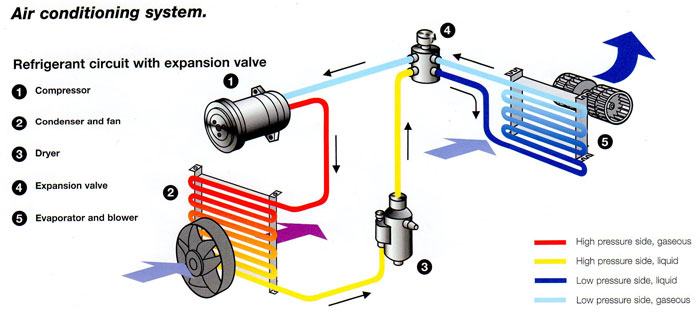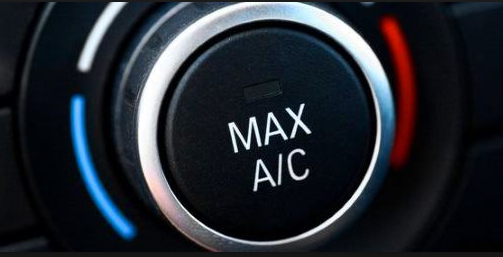Maintaining your car AC can give positive results on the mileage front. If you’re someone, who commutes daily to work fro home, you surely know the struggle. The daily monotonous routine of getting in your car and commuting to work gets unbearable at times. The traffic in most of the cities can be really frustrating. Traffic, noise, unnecessary abruption and the incessant frustration.
The entire outside world disrupts your cocooned journey in your car from home to work and the other way round. But the most disturbing and harmful aspect is pollution.
Most of the cities in India and around the world experience high levels of pollution almost for the entire year. The pollution that is generated from car fumes and other factors is a slow killer.
The PM 2.5 and PM 10 levels that dominate their presence in the air of the cities. These small particles are so fine that they can easily enter your body and harm your lungs dangerously.
What is the solution to save yourself from these airborne villains? That’s where we, GoMechanic comes in to help you out.
Read more to find out how to reduce pollution inside your car and if your AC really works in reducing pollution
Components of a Car AC

A car AC is very much similar to the AC in your bedroom. In order to make your AC fit in your car and for it to work properly, certain modifications have to be made.
Here’s a detailed view of a car AC and it’s components.
-
-
-
Compressor
A compressor is the heart and brain of a car’s AC. The compressor of a car raises the pressure of the refrigerant (usually R134A) and converts the liquid refrigerant in the car into a liquid form which allows the refrigerant to flow easily through the condenser.
-
Condenser
The condenser does the cooling job in the air conditioning system of the car. It lowers the temperature i.e. condenses the air through convection, either through radiator fan or by separated fan used along with the condenser.
-
Expansion Valve
This device in the air conditioning system of a car is used to expand high pressure, a low-temperature refrigerant that is used in your car’s AC, and releases its pressure before sending it to the evaporator for the next step.
-
Evaporator
It is the device that completes the cooling process of the car AC. It is placed just behind the AC vent of the car. The evaporator takes the heat from the passenger cabin and converts the liquid refrigerant into vapour, which then provides cooling through the cabin’s fan in the AC.
-
Receiver
It is a safety catch used in a car AC. This prevents a situation when instead of vapour, liquid flows through the car’s compressor which in turn can damage the entire car’s AC system. It is placed between the compressor and the evaporator.
-
Refrigerant
The refrigerant is like a fuel to the car’s AC system. The refrigerant (usually R134A) is a heat exchanging liquid which has a low boiling point and is used in the car’s AC system.
-
-
How does the Car AC take its Power?
The AC of the car draws its power from the engine of your car, just like the other parts. The engine provides the power to the air conditioner which in turn divides the power to two different areas.
Obviously, this is going to put a bit of strain on your car’s engine as the AC of the car is running.
The amount of strain that the air conditioner is going to put on your car’s engine depends on conditions like the condition of the engine, power of the vehicle’s air conditioning system and the manufacturing date of your car among many.
What does the research say?
The researchers at Washington University, St. Louis conducted a research study in order to find out what can be the most feasible and practical way to reduce pollution inside your car’s cabin.
The research was conducted by a group of engineers over a period of four months in which the engineers from the University fixed a portable pollution sensor inside and outside the two cars, which had the air conditioner on in one and the windows rolled down in the other.
Some rare but practical figures were noted down as the tests were conducted in real-life driving situations and in traffic.
The research was conducted in different situations and involved noting down the pollution figures in traffic, on highways, at a traffic light and when a polluting vehicle or a big truck, a bus was nearby.
They also used different ventilation settings inside their cars: driving with the windows open, windows closed, with the fan on, and with the air conditioning on.
The Conclusion
The 4-month research concluded with the result that the air inside a car’s cabin was around 20 to 34 per cent cleaner than with the windows rolled down.
The car AC has an air filter which can help in reducing the amount of particulate matter that make their way inside the car’s cabin.
Moreover, the evaporator that is present in your car’s AC can be thanked for the lower amount of pollution in your car’s cabin.
In the car’s AC system, the evaporator reduces the suspended particles by settling them on the surface and preventing them from entering the cabin.
Suggested For You: What Goes Into Your Car AC Service | Explained
Tips to reduce pollution inside your Car
The pollution in most of the metropolitan cities around the country is deteriorating day by day and while it is debatable and serious that cars do contribute majorly to air pollution, make sure that while you commute the pollution inside your car’s cabin is minimal.
Here are a few tips to ensure that the pollution inside your car’s cabin is minimal.
-
- While driving around a highly polluted vehicle make sure you switch on the air conditioning and use the option which recirculates the air inside the vehicle rather than relying upon the outside air.
- Maintain your car and do not keep it unkempt. Visit the service centres regularly to keep your car in shape.
- An under-maintained car usually tends to contribute more to pollution and in turn, pollutes the air inside the cabin as well. Service your car AC regularly.
The air conditioning system, when kept in a good shape makes sure that the pollutants do not enter your car to some extent. - Start carpooling. A single less car on a road can reduce a significant amount of CO2 in the surrounding air. So, if you haven’t started carpooling already, go for it!
- Ensure that you get your pollution checking certificate regularly. This will make sure that your car is hale and hearty and isn’t emitting more fumes than it usually should.
How to maintain your Car AC?
During the scorching tropical Indian summers, the temperature inside your car’s cabin can go as high as 60 degrees Celsius.
So, in order to avoid yourself sitting inside a sauna during the summer months, make sure you maintain your car’s air conditioner so it works properly.
-
- Make sure you turn the air conditioner on for 5 to 10 minutes at least once a week. Now, this might sound like a cumbersome task during the winter months but this will ensure that your car’s air conditioner works properly. This will maintain the gas’s pressure and the compressor will work properly.
- Make sure you recharge your air conditioner every two years in order to keep it running efficiently. Keep the refrigerant level on a check.
- The air conditioning system runs on a belt via the engine. So, in order to avoid any friction and damage, proper lubrication should be ensured. Any sort of insufficient lubrication may lead to failure of the compressor in the car.
- Keep an eye on the engine heat level on your car’s dashboard. If your car’s engine is overheating it may lead to the car’s AC working negatively. The air conditioning system in the car is located right near the engine’s radiator. Make sure you clean the radiator every three months.
- Try and prefer using the car’s air conditioner in the air recirculation mode. The recirculation mode of the AC consumes lesser power and works more quickly and efficiently. Moreover, use it in a traffic stretch to avoid pollution.
- Don’t turn a blind eye to any engine warning lights. Do not ignore any unusual sound from under the hood when you turn the air conditioner on.
Such noises may indicate wearing out of the belt, loosening of the boults or the liquid refrigerant entering the compressor. - Do not stress your car’s AC by running it in a car that has been directly under the sun. Turn the blower on first and roll down the windows a bit. This will let the hot air trapped inside to go out and then turn the AC on.
You Might Also Like: Car AC System Failure: Top 7 Reasons Why This Happens
How to minimize the performance issues due to your Car AC?

It is not an unknown fact that the car AC does reduce the car’s performance to some extent.
Here are some methods which might help reduce the effects of your car’s AC on your engine’s performance.
-
- Don’t always use the AC on maximum. Make sure you let the car cabin cool down slowly. Instead of putting the blower on the highest setting and the temperature on the lowest setting.
- When turning the engine on, make sure that you turn the air conditioner off. Not doing so might put an additional strain on the car’s battery and the engine.
- Try avoiding air conditioners in traffic situations. This would put additional stress on the engine apart from the clutch and brake stress.






[…] It’s one of the reasons why a number of car owners come down to authorized car servicing workshops and stores for repairing their AC machines. Also read: Your Car AC Can Reduce in-car Air Pollution By 34%. Here’s How! […]